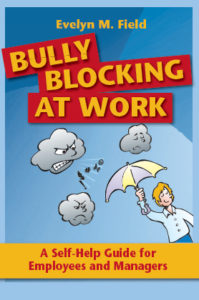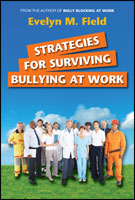There is a lot of information about bullying that you can Google. There are also videos and TED talks that can help you understand and cope. Here are some.
The ‘Social Brain’: Matthew Lieberman – TED talk and Webinar Recording
Matthew explains the importance of social connections that can make us smarter, happier and more productive. He explains that social pain and pleasure have as much impact on us as physical pain and pleasure and that social needs are more important than our physical needs for food and shelter.
What is post-traumatic stress disorder (PTSD)?
This short video explains what PTSD is, its symptoms, potential causes and treatment options. PTSD can develop after work place or school bullying.
TED Talks about Bullying and Corporate Psychopaths at Work
Professor Clive Boddy puts another perspective on the issue.
Daniel Goleman: Why aren’t we more compassionate?
Body language with Amy Cuddy
Valuable papers
- Williams, K. D., & Nida, S. A. (2014). Ostracism and Public Policy. Policy Insights from the Behavioral and Brain Sciences, 1(1), 38-45. https://doi.org/10.1177/2372732214549753
- Field, E.M., Ferris, P.A. (2021). Diagnosis and Treatment: Repairing Injuries Caused by Workplace Bullying. In: D’Cruz, P., Noronha, E., Caponecchia, C., Escartín, J., Salin, D., Tuckey, M.R. (eds) Dignity and Inclusion at Work. Handbooks of Workplace Bullying, Emotional Abuse and Harassment, vol 3. Springer, Singapore. https://doi.org/10.1007/978-981-13-0218-3_9
- Ferris, P.A, Deakin, R., Mathieson, S. (2019). Workplace bullying policies: A review of best practices and research on effectiveness. In P. D’Cruz et al. (eds.), Dignity and Inclusion at Work, Handbooks of Workplace Bullying, Emotional Abuse and Harassment 3. Springer Nature: Singapore
- Ferris, P.A., Tilley, L., Stephens, F. & Tanchak, S. (2019). The roles of the counselling professional in treating targets and perpetrators of workplace bullying. In P. D’Cruz et al. (eds.), Dignity and Inclusion at Work, Handbooks of Workplace Bullying, Emotional Abuse and Harassment 2. Springer Nature Singapore Pte Ltd. 2018.
- Ferris, P. A. (2004). A preliminary typology of organizational response to allegations of workplace bullying: See no evil, hear no evil, speak no evil. British Journal of Guidance and Counselling, 32, 389-396.
- Lieberman, M. D. (2013). Social: Why our brains are wired to connect. Crown Publishers/Random House.
- Herriot, Peter., Zapf, Dieter., & Leymann, Heinz. (1996). Mobbing and victimization at work. European Journal of Work and Organizational Psychology 5(2) 161-164.
- Branch, Sara. (2006). Upwards Bullying: Implications for How Managers and Organisations Approach Workplace Bullying in the Future. Conference, School of Management, Griffith’s University. Queensland.
- Ferris, Pat. (2004). A preliminary typology of organisational response to allegations of workplace bullying: see no evil, hear no evil, speak no evil. Department of Industrial Organisational Psychology, University of Calgary, Canada; British Journal of Guidance & Counselling, Vol. 32, No. 3.
- Lennane, Jean. (1995). The canary down the mine: what whistleblowers’ health tells us about their environment. Paper presented at Whistleblowers: protecting the nation’s conscience? Conference, Department of Criminology, Melbourne University.
- Eisenberger, Naomi. I., & Lieberma, Matthew. D. (2004). Why It Hurts to Be Left Out: The Neurocognitive Overlap Between Physical and Social Pain, Department of Psychology, University of California, California, USA.
- Eisenberger, Naomi. I., & Lieberman, Matthew D, Williams, Kipling. D. (2003). Does Rejection Hurt? An MRI Study of Social Exclusion, Science, Vol. 302. No. 5643.
- Laura R. Strouda, Peter Saloveyb & Elissa S. Epel. (2002) Biological Psychiatry Vol. 52, Issue 4, 15.8.
- Lutgen-Sandvik, Pamela, (2008). Intensive Remedial Identity Work: Responses to Workplace Bullying Trauma and Stigmatization, University of New Mexico, USA Volume 15(1): 97–119, Copyright © 2008 SAGE.
- Ebert, Angela., & Dyck, Murray. J. (2004).‘ The experience of mental death: the core feature of complex posttraumatic stress disorder’ School of Psychology, Curtin University, Western Australia. Clinical Psychology Review.
- Kudielka, Brigitte M., & Kern, Simone. (2004). Letter to the Editor / Journal of Psychosomatic Research 56. ‘In sum, our pilot study provides tentative evidence for a possibly altered circadian cortisol cycle in subjects who have experienced mobbing at the workplace’.
- Hazler, Richard J., & Janson, Gregory. R. (2004). Trauma Reactions of Bystanders and Victims to Repetitive Abuse Experiences, Ohio University, in the journal Violence and Victims. ‘Overall increases in physiological reactivity for victim and bystander experiences pointed to elevated emotional arousal when participants recalled past episodes of repetitive abuse.’
- Janoff-Bulman, R. (1992). Shattered Assumptions: Towards a New Psychology of Trauma. NY: Free Press. Refer chapter 9.
- Hershcovis, Sandy. M., & Barling, Julian. (2008). Comparing the outcomes of sexual harassment and workplace aggression: A meta-analysis. 7th Conference on Work, Stress and Health. USA.
- Hoel, Helge., Sparks, Kate., & Cooper, Cary, l. The cost of violence/stress at work and the benefits of a violence/stress-free working environment, International Labour Organization (ILO) Geneva.
- Hirigoyen, Marie-France & Bonafons. (2004). Claire, French law concerning moral harassment in the workplace: what are the prospects? Fourth International Conference on Bullying And Harassment in the Workplace, Norway.
- Hunter, M. (2007). PTSD: Treatment and the brain, Toronto.
- Janoff-Bulman, R. (1985). The aftermath of victimization: Rebuilding shattered assumptions. In C.R. Figley (ed.). Trauma and its wake: The study and treatment of posttraumatic stress disorder (pp. 15-35). New York: Brunner/Mazel Inc.
- Tracy, S. J., Alberts, J. K., & Rivera, K. D. (In Press, 2009). How to bust the office bully: Eight tactics for explaining workplace abuse to decision-makers. In A. Varma (Ed.)Understanding and Addressing Workplace Bullying. Andhra Pradesh, India: ICFAI University Press.
- Leymann, Heinz., & Gustafsson, Annelie. (1996). Mobbing at work and the development of Post-Traumatic Stress Disorders, European Journal of Work and Organizational Psychology.
- Herman, Judith Lewis. (1992). Complex PTSD: A syndrome in survivors of prolonged and repeated trauma, Journal of Traumatic Stress, Springer Netherlands, Volume 5, Number 3.
- Hansen, Ase Marie, et al. (2006). Bullying at work, health outcomes, and physiological stress response. Journal of Psychosomatic Research 60, 63– 72.
- Van Hooff, M., McFarlane, A.C., Baur, J., Abraham, M., & Barne, D.J. (2008). The stressor Criterion-A1 and PTSD: a matter of opinion? Journal of Anxiety Disorders. (2009) Jan; 23(1). University of Adelaide, Australia.
- Ebert, Angela., & Dyck, Murray. J. (2004). The experience of mental death: The core feature of complex posttraumatic stress disorder. School of Psychology, Curtin University of Technology, Perth, Western Australia Clinical Psychology Review 24.
- Tehrani, Noreen. (2004). Bullying: a source of chronic post-traumatic stress? British Journal of Guidance & Counselling, Vol. 32, No. 3, August.
- Meewisse, Marie-Louise., Reitsma, Johannes. B., De Vries, Giel-Jan., Gersons, Berthold P.R., & Olff, Miranda. (2007). Cortisol And Post-Traumatic Stress Disorder In Adults, Systematic Review And Meta-Analysis, British Journal Of Psychiatry.
- Richards, J., & Daley, H. (2003). Bullying policy: Development, implementation and monitoring. In S. Einarsen, H. Hoel, D. Zapf & C. Cooper (Eds.), Bullying and emotional abuse in the workplace: International perspectives in research and practice. London: Taylor and Francis.


